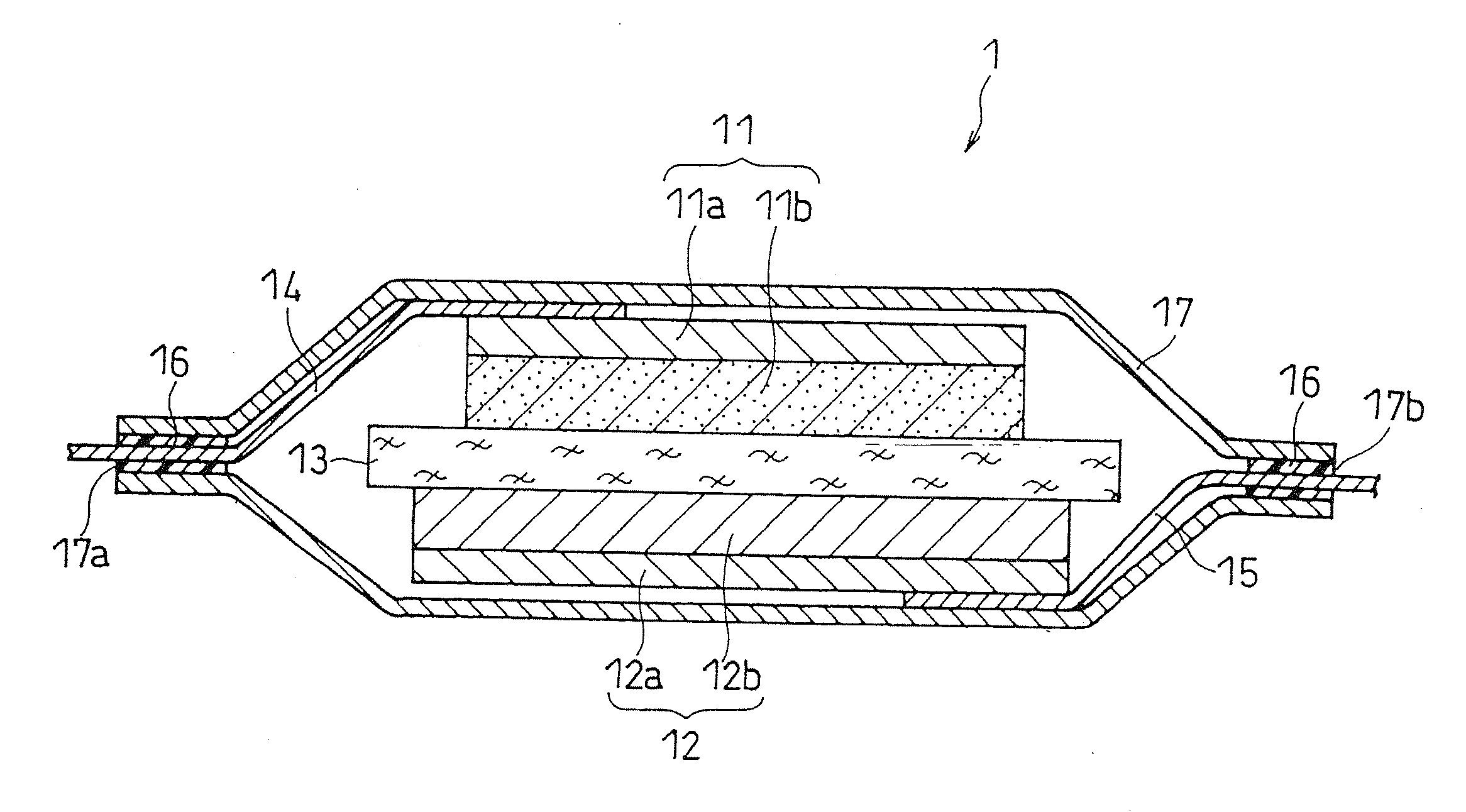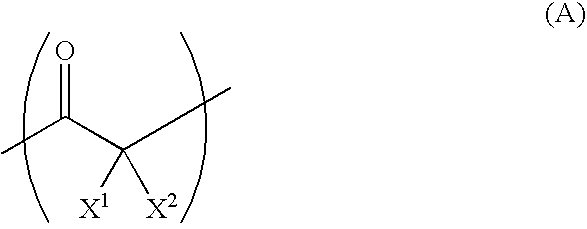Separator for non-aqueous electrolyte battery and non-aqueous electrolyte battery
a technology of electrolyte battery and separator, which is applied in the direction of li-accumulators, cell components, cell component details, etc., can solve the problems of deterioration of the middle layer by oxidation, inability to easily oxidize the separator, and use such high-potential positive electrode active materials, etc., to achieve excellent oxidation resistance, high mechanical strength, and excellent shape.
- Summary
- Abstract
- Description
- Claims
- Application Information
AI Technical Summary
Benefits of technology
Problems solved by technology
Method used
Image
Examples
example 1
[0068](i) Separator Preparation
[0069]A copolymer of tetrafluoroethylene and carbon monoxide was synthesized as in below.
[0070]A pressure-resistant container having a reagent inlet was evacuated and backfilled with an inert gas (argon). To this pressure-resistant container, 100 g of degassed water (a solvent for radical polymerization), 36 g of isooctane (a solvent for radical polymerization), and 0.2 g of benzoyl peroxide (an initiator for radical polymerization) were charged. Formic acid was added to the container to adjust the pH of the content to pH 3, and then the container was sealed. Then, from the reagent inlet, 100 g of tetrafluoroethylene was added, and carbon monoxide was charged further until the internal pressure of the pressure-resistant container reached 200 atmospheres. The reaction was carried out at 80° C. for 8 hours, while stirring with a magnetic stirrer. After the reaction, the pressure-resistant container was opened, and the reaction mixture was sufficiently wa...
example 2
[0077]A copolymer for the separator was obtained in the same manner as Example 1, except that hexafluoropropylene was used instead of tetrafluoroethylene. A separator was made in the same manner as Example 1 and a battery of Example 2 was made.
[0078]The fluorine atom content in the obtained copolymer for the separator was 71 wt %. This implies that 2.7 molecules of tetrafluoroethylene was reacted per 1 molecule of carbon monoxide. From the analysis using infrared spectroscopy, absorption based on the carbonyl group was confirmed. The synthesized copolymer presumably has the chemical structure formula below. Regarding the position of the trifluoromethyl group, isomers would also exist.
example 3
[0079]A copolymer for the separator was obtained in the same manner as Example 1, except that 1,1-difluoroethylene was used instead of tetrafluoroethylene. A separator was made in the same manner as Example 1 and a battery of Example 3 was made.
[0080]The fluorine atom content in the obtained copolymer for the separator was 51 wt %. This implies that 2.7 molecules of 1,1-difluoroethylene was reacted per 1 molecule of carbon monoxide. From the analysis using infrared spectroscopy, the absorption based on the carbonyl group was confirmed. The synthesized copolymer presumably has the chemical structure formula below.
PUM
| Property | Measurement | Unit |
|---|---|---|
| voltage | aaaaa | aaaaa |
| temperature | aaaaa | aaaaa |
| molar ratio | aaaaa | aaaaa |
Abstract
Description
Claims
Application Information
 Login to View More
Login to View More - R&D
- Intellectual Property
- Life Sciences
- Materials
- Tech Scout
- Unparalleled Data Quality
- Higher Quality Content
- 60% Fewer Hallucinations
Browse by: Latest US Patents, China's latest patents, Technical Efficacy Thesaurus, Application Domain, Technology Topic, Popular Technical Reports.
© 2025 PatSnap. All rights reserved.Legal|Privacy policy|Modern Slavery Act Transparency Statement|Sitemap|About US| Contact US: help@patsnap.com



